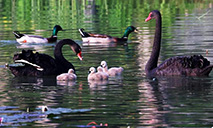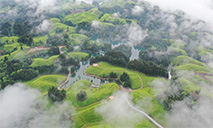New scientific expedition started on Mount Qomolangma in China's Tibet
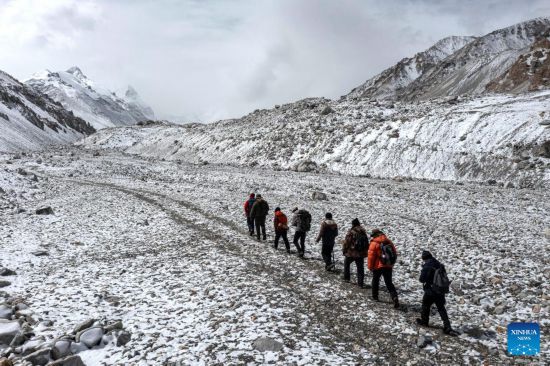
Aerial photo taken on May 1, 2022 shows members of a scientific research team marching towards East Rongbuk glacier on Mount Qomolangma.
China has started a new comprehensive scientific expedition on Mount Qomolangma, the world's highest peak on the China-Nepal border.
The expedition focuses on major scientific issues such as westerly wind-monsoon synergy, Asian water-tower change, ecosystems and biodiversity, and human activities in the Mount Qomolangma area.
The expedition team will also conduct studies on environmental changes, changes in greenhouse gas concentration, ecosystem carbon sink functions, and human adaptation to extreme environments in extremely high altitude areas of the Mount Qomolangma against the backdrop of global warming, according to the research team. (Xinhua/Sun Fei)
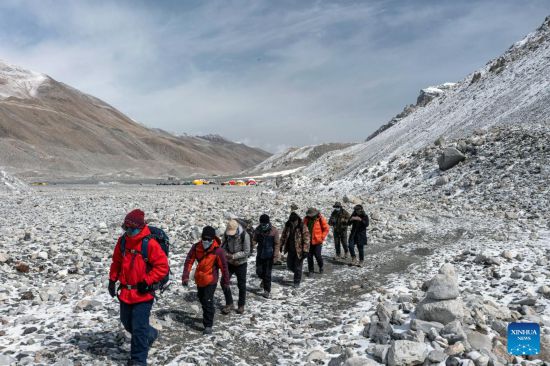
Aerial photo taken on May 1, 2022 shows members of a scientific research team marching towards East Rongbuk glacier on Mount Qomolangma.
China has started a new comprehensive scientific expedition on Mount Qomolangma, the world's highest peak on the China-Nepal border.
The expedition focuses on major scientific issues such as westerly wind-monsoon synergy, Asian water-tower change, ecosystems and biodiversity, and human activities in the Mount Qomolangma area.
The expedition team will also conduct studies on environmental changes, changes in greenhouse gas concentration, ecosystem carbon sink functions, and human adaptation to extreme environments in extremely high altitude areas of the Mount Qomolangma against the backdrop of global warming, according to the research team. (Xinhua/Sun Fei)

Kang Shichang (1st L), leader of a scientific research team, inspires his team members before a scientific expedition at the Mount Qomolangma base camp, May 1, 2022.
China has started a new comprehensive scientific expedition on Mount Qomolangma, the world's highest peak on the China-Nepal border.
The expedition focuses on major scientific issues such as westerly wind-monsoon synergy, Asian water-tower change, ecosystems and biodiversity, and human activities in the Mount Qomolangma area.
The expedition team will also conduct studies on environmental changes, changes in greenhouse gas concentration, ecosystem carbon sink functions, and human adaptation to extreme environments in extremely high altitude areas of the Mount Qomolangma against the backdrop of global warming, according to the research team. (Xinhua/Jiang Fan)
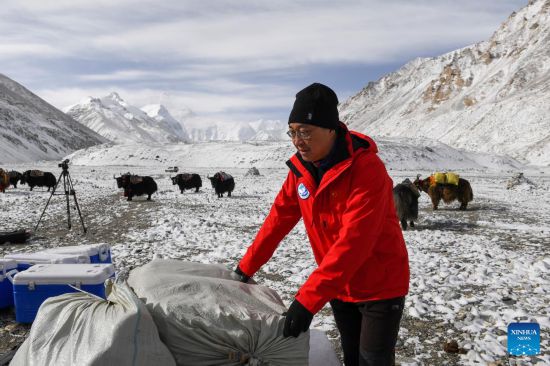
Kang Shichang, leader of a scientific research team, checks supplies before a scientific expedition at the Mount Qomolangma base camp, May 1, 2022.
China has started a new comprehensive scientific expedition on Mount Qomolangma, the world's highest peak on the China-Nepal border.
The expedition focuses on major scientific issues such as westerly wind-monsoon synergy, Asian water-tower change, ecosystems and biodiversity, and human activities in the Mount Qomolangma area.
The expedition team will also conduct studies on environmental changes, changes in greenhouse gas concentration, ecosystem carbon sink functions, and human adaptation to extreme environments in extremely high altitude areas of the Mount Qomolangma against the backdrop of global warming, according to the research team. (Xinhua/Jiang Fan)

Workers transport supplies for a scientific expedition at the Mount Qomolangma base camp, May 1, 2022.
China has started a new comprehensive scientific expedition on Mount Qomolangma, the world's highest peak on the China-Nepal border.
The expedition focuses on major scientific issues such as westerly wind-monsoon synergy, Asian water-tower change, ecosystems and biodiversity, and human activities in the Mount Qomolangma area.
The expedition team will also conduct studies on environmental changes, changes in greenhouse gas concentration, ecosystem carbon sink functions, and human adaptation to extreme environments in extremely high altitude areas of the Mount Qomolangma against the backdrop of global warming, according to the research team. (Xinhua/Jiang Fan)
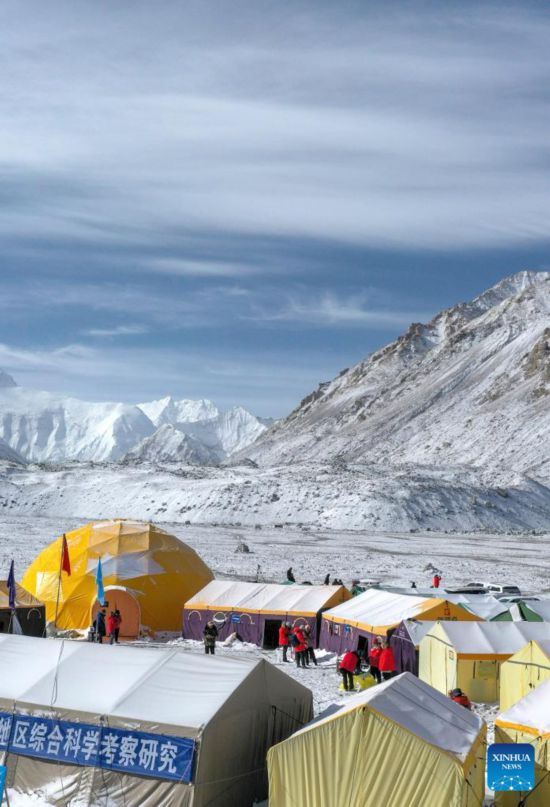
Aerial photo taken on May 1, 2022 shows a view of the Mount Qomolangma base camp.
China has started a new comprehensive scientific expedition on Mount Qomolangma, the world's highest peak on the China-Nepal border.
The expedition focuses on major scientific issues such as westerly wind-monsoon synergy, Asian water-tower change, ecosystems and biodiversity, and human activities in the Mount Qomolangma area.
The expedition team will also conduct studies on environmental changes, changes in greenhouse gas concentration, ecosystem carbon sink functions, and human adaptation to extreme environments in extremely high altitude areas of the Mount Qomolangma against the backdrop of global warming, according to the research team. (Xinhua/Sun Fei)
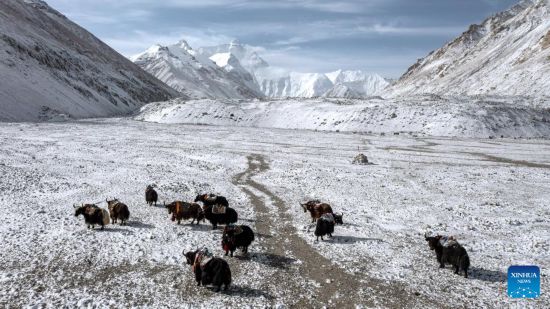
Aerial photo taken on May 1, 2022 shows yaks transporting supplies at the Mount Qomolangma base camp.
China has started a new comprehensive scientific expedition on Mount Qomolangma, the world's highest peak on the China-Nepal border.
The expedition focuses on major scientific issues such as westerly wind-monsoon synergy, Asian water-tower change, ecosystems and biodiversity, and human activities in the Mount Qomolangma area.
The expedition team will also conduct studies on environmental changes, changes in greenhouse gas concentration, ecosystem carbon sink functions, and human adaptation to extreme environments in extremely high altitude areas of the Mount Qomolangma against the backdrop of global warming, according to the research team. (Xinhua/Li Jian)
Photos
Related Stories
- Qomolangma expedition explores ultra-high altitude health issues
- World's highest automatic weather station to be set up on Mt. Qomolangma
- In pics: view of Mount Qomolangma
- French climbers identify new route to peak of Mt. Qomolangma
- Special town built at foot of Mt. Qomolangma to benefit mountaineers and tourists
Copyright © 2022 People's Daily Online. All Rights Reserved.








